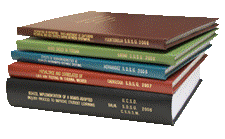Libraries, University of Nebraska-Lincoln

Archival Master’s Theses from the University of Nebraska-Lincoln
Date of this Version
8-1973
Document Type
Thesis
Citation
Thesis (M.S.)—University of Nebraska—Lincoln, 1973. Department of Agricultural Economics.
Abstract
This objective of this study is to compare the cost, resource mobility and profitability of diversified model retail farm supply firms using: (1) Six enterprises of grain handling, custom-mix feed, petroleum, liquid fertilizer, anhydrous ammonia fertilizer and liquefied petroleum (LP) gas; (2) Different capacity levels (three for five enterprises and two for liquid fertilizer) creating three firms of sizes A, B, and C with A being the smallest and C being the largest; and (3) Three utilization percentages (50, 75, and 100) for each enterprise capacity.
The methodology employs budgeting revenues, costs, enterprise capacities, and expected sales for each enterprise.Using the computer, the normative linear programming model maximizes a firm’s profit by optimum resource allocation among a firm’s enterprises.The computer is also used for partial budgeting to assist with cost allocation after solving for an optimal solution.
Several conclusions came out of this study. One such conclusion was the idea that the capital pooling effect for any multi-firm utilization is not as a great as labor pooling.Dollars are less “lumpy” than laborers, and thus less possible to become redundant. In this model when the capital pool has an effect upon the multi-firm, it is very slight compared to dollar profit or the effects of labor pooling.
Advisor: P.W. Lytle


Comments
Copyright 1973, the author. Used by permission.